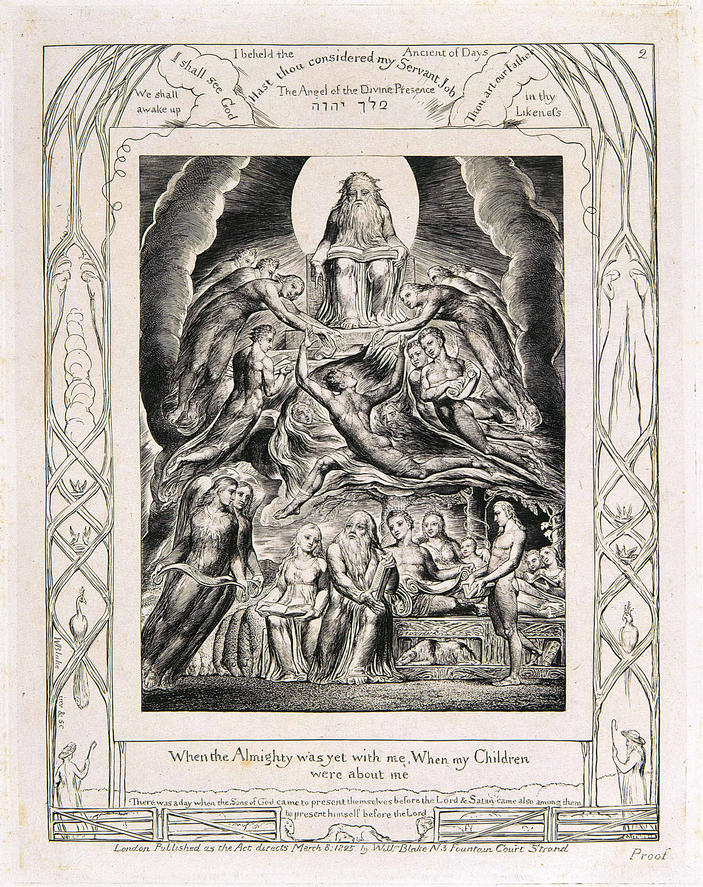In 1794, near the beginning of Blake's serious career, he came forth with the Gates of Paradise, an emblem book with small pictures and short captions. In it he set forth a cycle of development from babyhood to the end of life. This recurring psycho/spiritual progression set his agenda for years ahead.
In 1826, near the end of Blake's life his benefactor and friend John Linnell, had Blake make copies for him of the illustrations to the Book of Job which he had painted for Capt. Butts years before. In consequence Blake created an engraved work called Illustrations of the Book of Job. It has a remarkable consistency with the work done 32 years before for Gates of Paradise.
Job, one of the latest Old Testament books, produced at some time fairly near the advent of the Son, consists of a chapter or two of novelistic material at the beginning and then at the end. Between the two, the author wrote many pages of poetic material. The casual Bible reader may read the 'novelistic' and let the poetry go but Blake found great meaning in all of the stages traversed by Job in the biblical account.
 |
| Wikimedia Commons Illustrations of the Book of Job Plate 2 |
Blake also concentrated on the prose story but used it in extremely poetic ways. The 21 engraved images make up this work following Job's descent into despair and his ascent to an revised relationship to God and his fellow man. Surrounding the pictures are words from the Book of Job and drawings to reinforce our understanding of Job's condition.
Like so many of Blake's pictorial creations we often see three layers: a God-like or Eternal upper one, a middle one representing the conscious mind, and the lower for the unconscious fountain.
With these plates Blake described the cycle of Life: Albion's, Blake's, mine and yours.
C.G.Jung, a poet masquerading as a Scientist and perhaps the closest thing to Blake that the 20th Century gave us, also found in Job a central mystery, which he tried to fathom, much like Blake had. The record of Jung's Answer to Job appears in pages 519-650 of a translated work called The Portable Jung.
At 76 Jung found the courage to confess his feelings about Job's God. When he began this he decided that he would treat the psychic fact of God as a person, just as religionists do. Doing this of course, he gave up the guise of a Scientist to speak poetically -- a more direct approach to Truth reminiscent of the four year old Jung's dream of the gigantic turd falling on the cathedral. In effect Jung denounced the conventional picture of a God as a rewarder of the righteous.
All of this bears on our discussion of the central mystery of Illustrations of the Book of Job. Here is a scholarly paper on the subject of Blake and Jung.
.
No comments:
Post a Comment